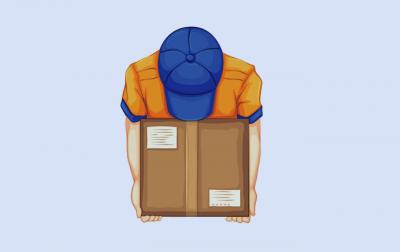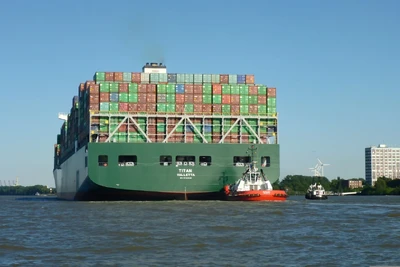
When it comes to international freight from Asia to Southern Europe, China to Italy is a vital trade route—particularly for importers in sectors like fashion, furniture, electronics, and industrial components. Efficient shipping from China to Italy requires more than just rate shopping; it demands a logistics strategy that aligns with transit time targets, customs compliance, Incoterms, and the unique characteristics of Italy’s infrastructure.
This guide outlines the most efficient shipping methods, customs procedures, cost-saving strategies, and best practices for companies importing goods from China to Italy.
For large-volume shipments or heavy goods, ocean freight remains the most economical option.
FCL (Full Container Load): Best suited for shipments exceeding 15–20 CBM or when cargo security is a priority.
LCL (Less than Container Load): Ideal for smaller shipments, typically below 15 CBM.
Major Chinese Ports of Origin:
Shanghai
Ningbo
Shenzhen
Qingdao
Key Italian Ports of Entry:
Port of Genoa (largest and most connected)
Port of La Spezia
Port of Venice
Port of Trieste (strategically important for Eastern and Central Europe)
Transit Time (Port to Port):
Average: 28–35 days
Via Suez Canal route (standard container vessel)
Pro Tip: If you're importing high-volume seasonal goods (e.g. textiles or furniture), book containers at least 3–4 weeks in advance to avoid equipment shortages during peak season (especially Q3 and pre-Chinese New Year).
Rail freight via the China–Europe Railway offers a balance between speed and cost.
Transit Time: 17–22 days (faster than sea, cheaper than air)
Route: Origin cities like Chengdu, Chongqing, Xi’an, or Zhengzhou → through Kazakhstan, Russia, Belarus, Poland → Northern Italy (e.g., Milan, Verona)
Best for: Electronics, automotive parts, machinery, consumer goods
Note: Rail freight is more stable post-pandemic, but capacity may fluctuate depending on geopolitical conditions and customs delays at land border crossings.
If time is critical, air freight is the preferred method—especially for high-value or perishable goods.
Main Airports in Italy:
Milan Malpensa (MXP)
Rome Fiumicino (FCO)
Bologna Airport (BLQ) – often used for express couriers and regional delivery
Transit Time:
Direct flights: 2–5 days
With transshipment: 5–8 days
Cost Considerations:
Priced per chargeable weight (volumetric or gross, whichever is higher)
Fuel surcharges, security fees, and handling charges apply
Best practice: Use air freight for eCommerce replenishments, spare parts, or launches where speed outweighs cost concerns.
For small parcels (usually under 100 kg), express services like DHL, FedEx, UPS provide door-to-door shipping with customs clearance included.
Transit time: 2–4 days
Weight-based pricing
Often used for B2B samples, urgent documents, or dropshipping
Consider courier consolidators if you ship frequently in low volumes—they can offer significant cost reductions over published rates.
Importers must prepare:
Commercial Invoice (with HS codes)
Packing List
Bill of Lading or Air Waybill
Certificate of Origin (if claiming tariff preferences)
Import License (if applicable under EU regulations)
EORI Number (Economic Operator Registration and Identification – mandatory for customs declaration in the EU)
Standard VAT: 22% (on CIF value + duty + all costs up to first EU destination)
Import Duties: Vary by HS code and product type
Preferential Tariffs: May apply if the goods qualify under the EU–China trade rules of origin
Pro Tip: Consult TARIC (EU’s integrated tariff database) to determine exact duty and VAT for your goods.
EXW (Ex Works): Buyer handles all transport and import formalities
FOB (Free on Board): Seller delivers to port, buyer assumes freight and customs
DAP (Delivered at Place): Seller delivers to buyer’s warehouse in Italy, buyer handles VAT and duties
DDP (Delivered Duty Paid): Seller assumes full responsibility—including VAT and customs duties
For Italian importers managing their own logistics, FOB or DAP are the most flexible Incoterms, allowing control over the shipping process and clearance.
| Component | Description |
Ocean freight | FCL or LCL rates from port to port |
BAF / CAF | Fuel and currency adjustment fees |
Origin charges | Handling, documentation, customs export in China |
Destination charges | Terminal handling and import fees in Italy |
Duties & VAT | Paid based on customs valuation |
Delivery to final destination | Via truck or rail within Italy or EU |
Use a bonded warehouse or CFS (Container Freight Station) in China to combine goods from multiple suppliers
Reduces LCL costs and avoids multiple customs entries
A forwarder should handle:
ENS (Entry Summary Declaration) for EU imports
EORI registration support
Accurate HS classification and tax calculation
Multimodal shipping (sea–rail, sea–air)
Monitor changes in CBAM (Carbon Border Adjustment Mechanism)
Stay compliant with REACH, RoHS, or CE marking requirements, depending on your product
Track EU–China diplomatic developments that may affect tariffs or transport routes
| Mode | Cost Estimate (From China to Italy) | Transit Time |
FCL 20ft Container | $2,100 – $3,200 | 28–35 days |
FCL 40ft Container | $3,800 – $5,000 | 28–35 days |
LCL (per CBM) | $90 – $130 | 30–38 days |
Rail Freight | $7,000 – $9,000 / 40ft container | 17–22 days |
Air Freight | $5.50 – $8.00/kg | 3–7 days |
Pricing varies by port of origin, shipping season, carrier, and service level. Always verify with your freight provider.
Shipping from China to Italy can be efficient and cost-effective when logistics are aligned with your business needs. Whether you're operating in Milan’s fashion hub or Italy’s industrial north, a data-driven freight strategy and strong documentation discipline will minimize delays and reduce landed costs.
For time-sensitive goods, integrate rail or air freight into your routing plan. For large-volume shipments, plan container bookings early and review customs impact by Incoterm.
Looking for reliable support to manage China–Italy freight, customs, and delivery?
CUC Freight specializes in B2B logistics solutions and has handled thousands of shipments from China to Europe. Contact us today for custom routing, transit time optimization, and bonded logistics support tailored to your industry.
 Customs ExpertiseMarch 27, 2025In the complex landscape of international shipping, customs clearance stands as a critical juncture that can make or break your logistics operations. At CUC Freight our Customs Expertise is the key to...view
Customs ExpertiseMarch 27, 2025In the complex landscape of international shipping, customs clearance stands as a critical juncture that can make or break your logistics operations. At CUC Freight our Customs Expertise is the key to...view Door to Door vs. Port to Port in International ShippingJune 16, 2024In the realm of international shipping, choosing the right logistics strategy can significantly impact the efficiency, cost-effectiveness, and overall success of transporting goods across borders. Two...view
Door to Door vs. Port to Port in International ShippingJune 16, 2024In the realm of international shipping, choosing the right logistics strategy can significantly impact the efficiency, cost-effectiveness, and overall success of transporting goods across borders. Two...view Mastering the Supply Chain: Streamlining the Process of Shipping Goods from China to CanadaMarch 13, 2024In today's globalized economy, the supply chain has become a crucial link connecting economies worldwide. With China being a major manufacturing hub, trade relations with Canada are becoming incre...view
Mastering the Supply Chain: Streamlining the Process of Shipping Goods from China to CanadaMarch 13, 2024In today's globalized economy, the supply chain has become a crucial link connecting economies worldwide. With China being a major manufacturing hub, trade relations with Canada are becoming incre...view Trump Tariffs Update – President to Clarify Electronics Tariffs on MondayApril 7, 2025President Donald Trump, returning to the capital aboard Air Force One on Sunday evening after a weekend in Florida, dismissed reports of inconsistent messaging on tariffs, asserting there should be “...view
Trump Tariffs Update – President to Clarify Electronics Tariffs on MondayApril 7, 2025President Donald Trump, returning to the capital aboard Air Force One on Sunday evening after a weekend in Florida, dismissed reports of inconsistent messaging on tariffs, asserting there should be “...view